December 16, 2020
How It’s Growing: Highlights from CTG Viewers
I learn so much from our viewers! It’s fun to see what everyone’s growing and what wildlife are visiting their gardens. As we head out of 2020, I gathered together their recent stories. Daphne recorded in her living room, assisted by Augie and Lulu.

After I edited at home, final editor Paul Sweeney polished it off from his home headquarters. Since my house bunny Jamie supervised me, she wants to be included here for her love of garden parsley, cilantro, and wild dandelions (as treats). She keeps fit by jumping her agility hurdle we made from PVC pipe.
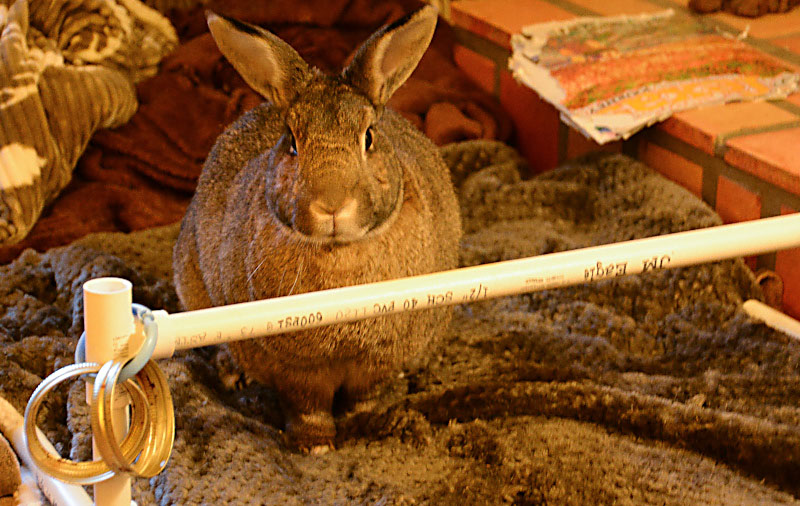
It has been a topsy-turvy year, including for our plants. In mid-October, Lockhart gardeners Richard and Doris Hunnicutt spied bluebonnets. Daphne explains, “This off-season bloom pattern has been happening more over the last few years. Climate change has made our seasons completely unreliable, with warmer winters, hotter summers, and generally pervasive drought, which has upended some plants’ life cycles.”
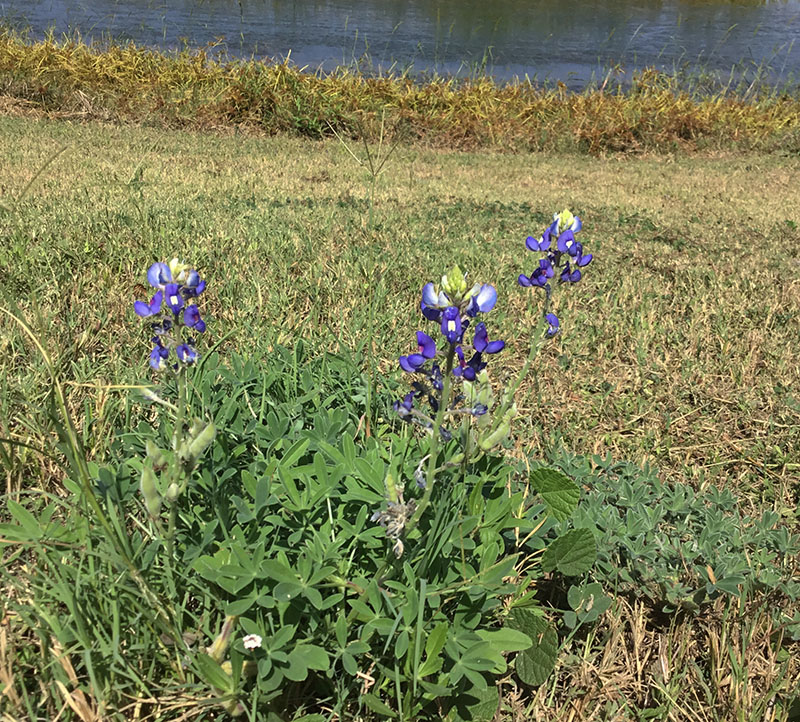
Note: If you planted wildflower seeds this fall, be sure to water the young seedlings since rainfall continues to give us a miss.
In Kirby,Teresa Miller donned her plant detective hat to identify the culprit stripping leaves from her moonflower vines: a pink-spotted hawkmoth caterpillar. She learned that they pupate in the soil, and that as adult moths, they are extremely beneficial as pollinators of moonflowers and other blooms. We really like her philosophy, “Definitely worth the loss of some leaves.”
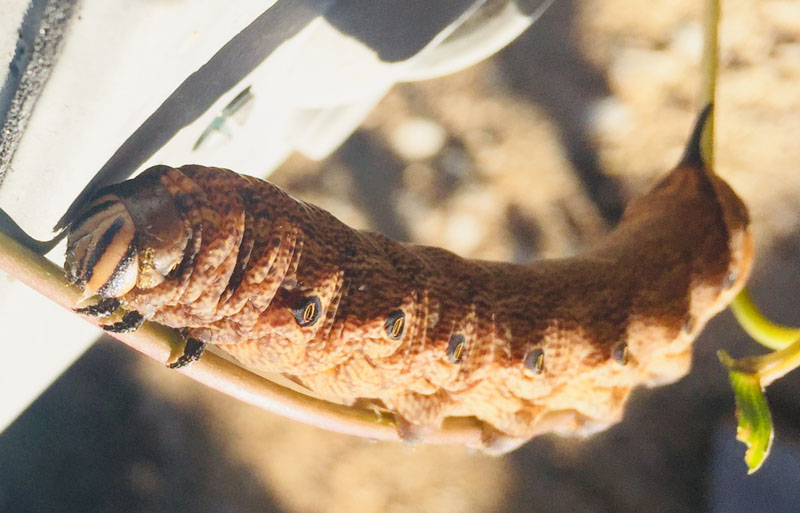
Native Black-eyed Susans are the host plant for Gorgone Checkerspot and Bordered Patch butterflies. Tim Wheeler’s great stand of these biennials attract bees and butterflies to its warm weather flowers, while birds devour the seeds.
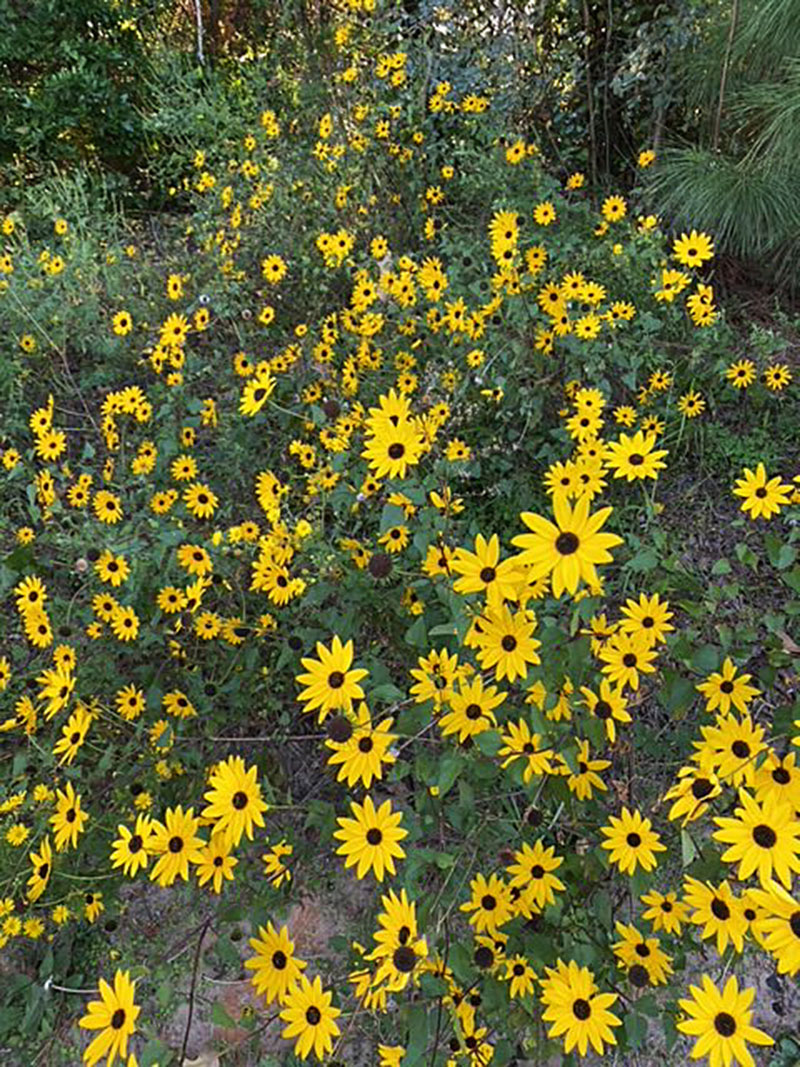
South of Hillsboro, William Ferguson spotted a great find near dead elm trees. These unique fungi are Chorioactis geaster, commonly called Devil’s Cigar or Texas Star fungi, found in only two general places in the world—Japan and Texas!
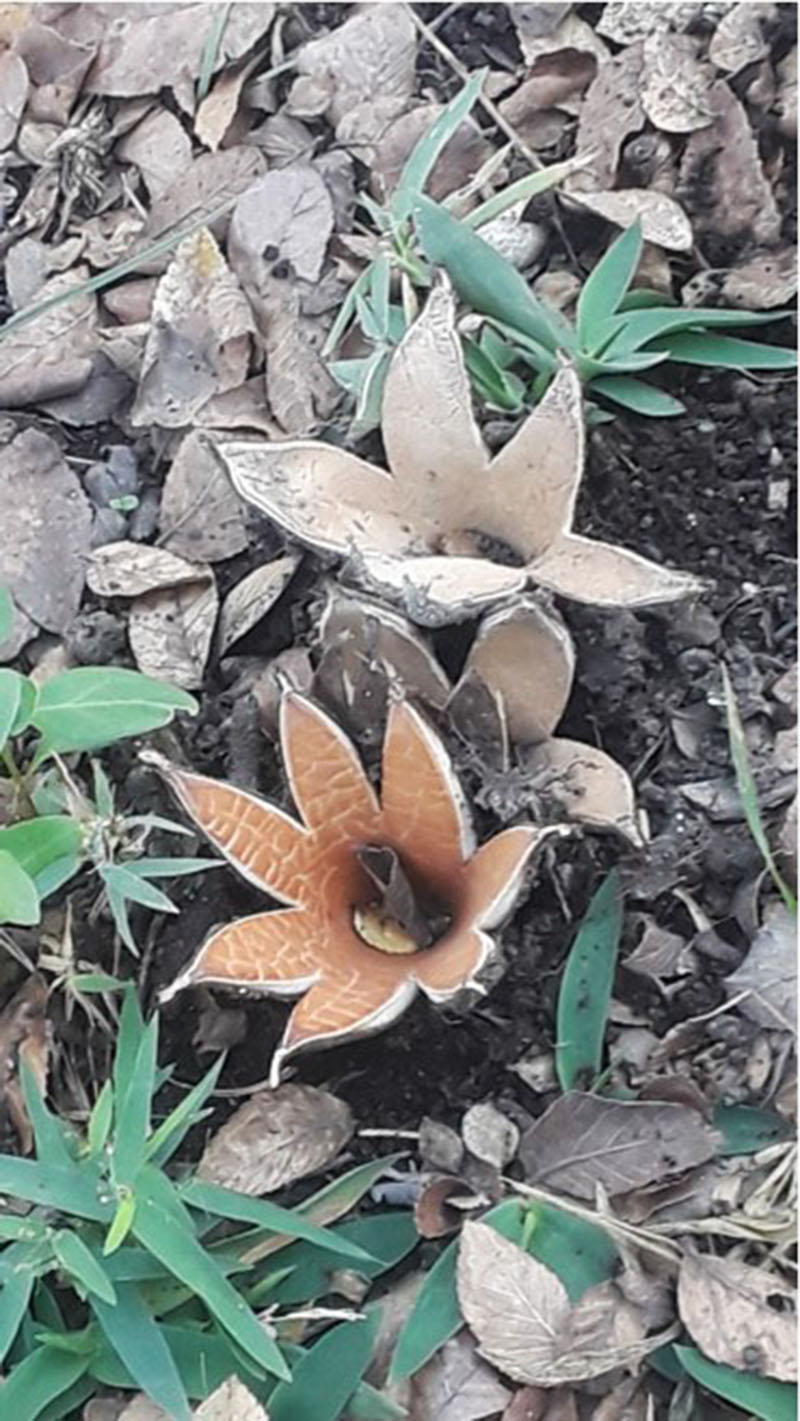
Wildlife can be hard to photograph since they’re always on the move, but Marta Machoro caught this anole patiently awaiting an insect lunch from its perch on Ruellia, commonly called Mexican petunia.
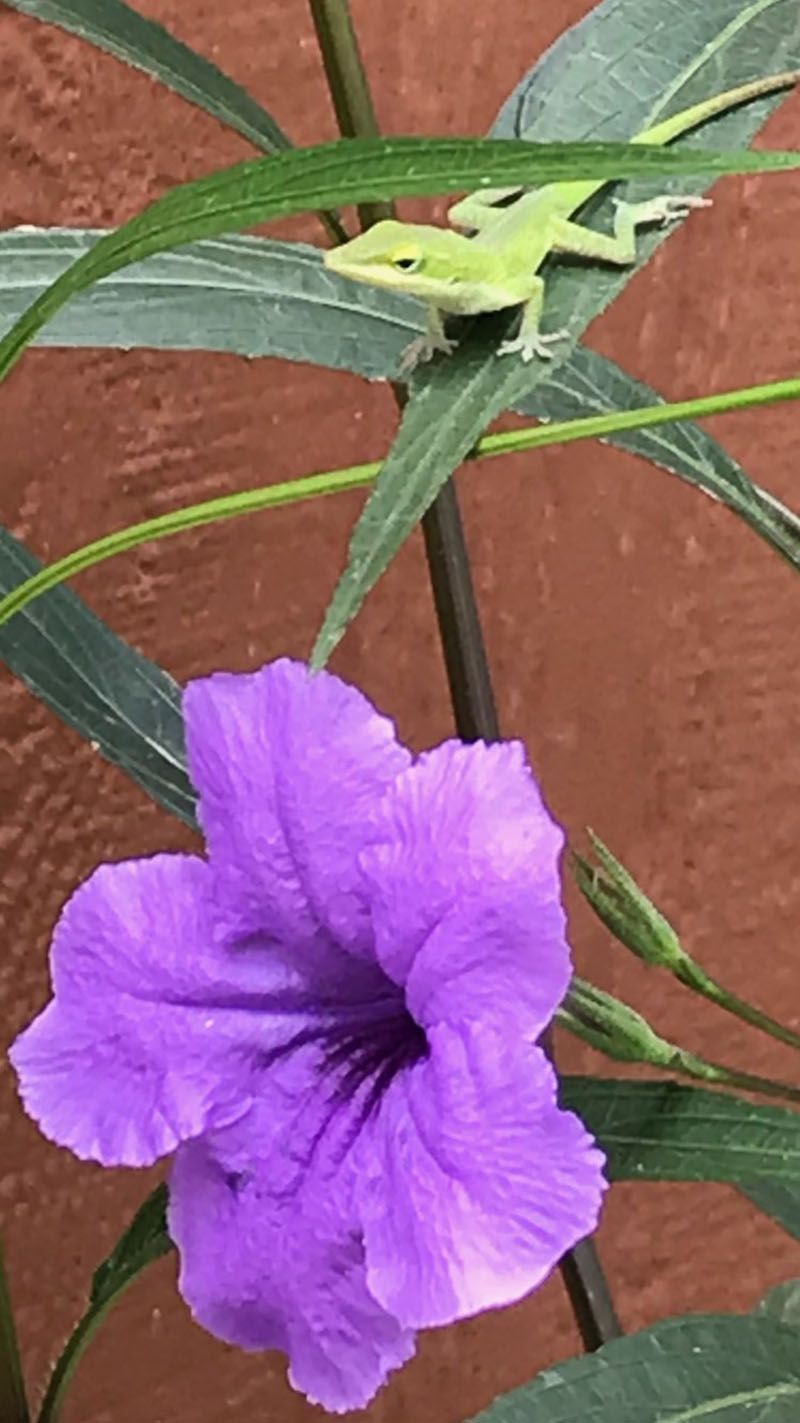
You don’t need a big yard to grow a little corner for pollinators and birds. In south Austin, Marty Wise cultivates planted and volunteer flowers and herbs, including Mexican milkweed, basil, and a HUGE sunflower!
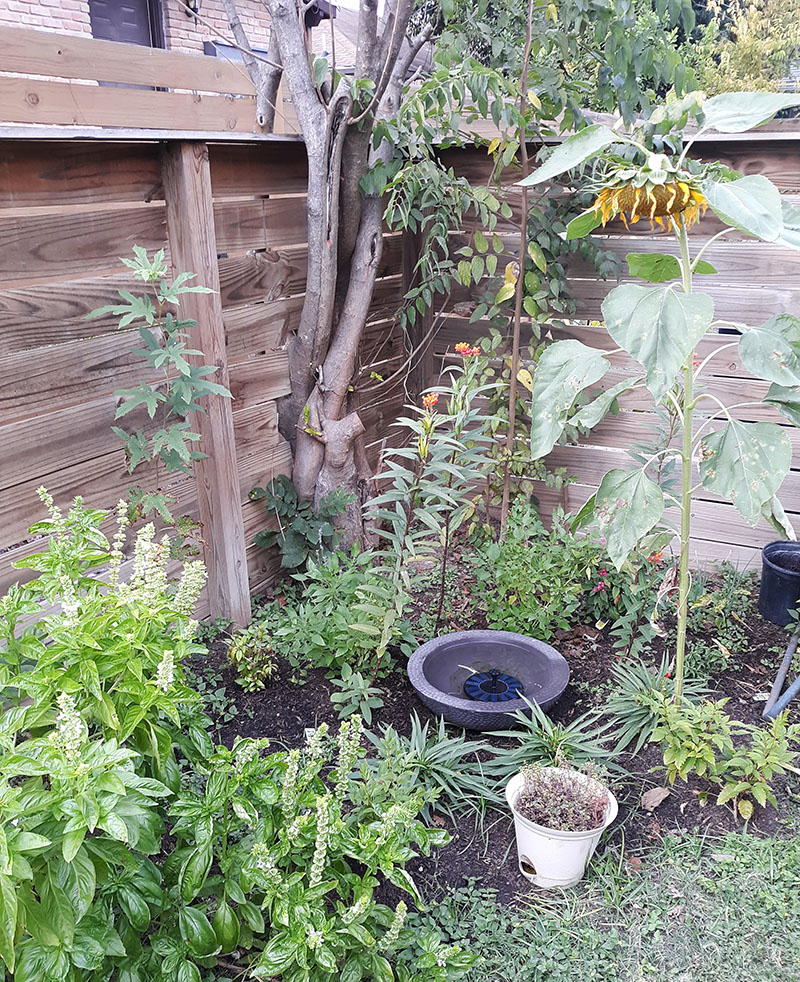
Rick Evans popped standout color into summer with ‘Black Pearl’ ornamental peppers. Those purple-black leaves make a striking contrast against greens and silvers. Edible fruits ripen to red, but be forewarned: they are very hot at 30,000 Scoville units! Like other peppers, they can’t take freezing temperatures, so treat this beauty as an annual. And be sure to save some seeds for planting next year.
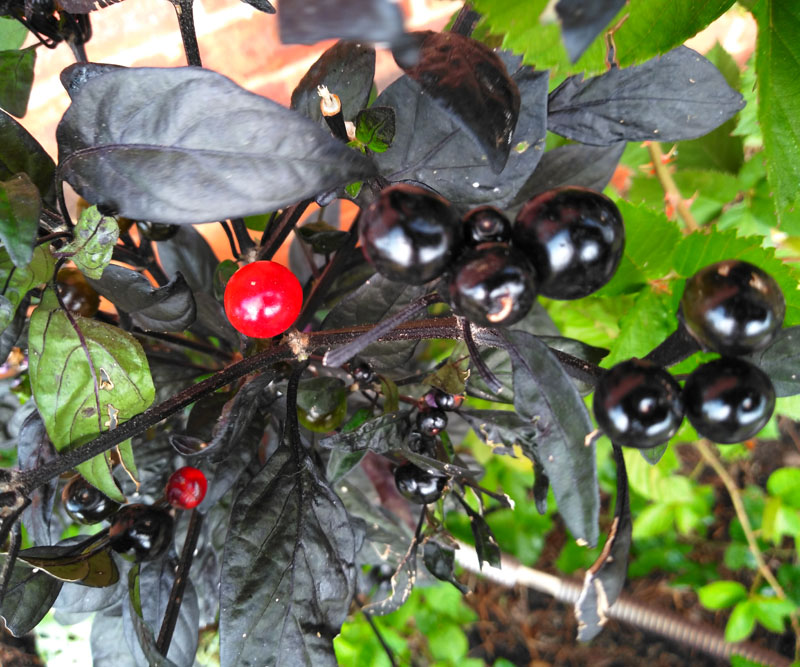
Epiphytic staghorn ferns vary in cold tolerance, aka hardiness, but should be considered extremely sensitive. Although they will likely survive a brief exposure to 30°, they should be protected when temperatures dip even a notch below 40°. Ray Vanegas cultivates a very special family heirloom: a 20-year-old staghorn handed down from his parents. He’s had it now for 19 years, leaving it outdoors for 10 months a year.
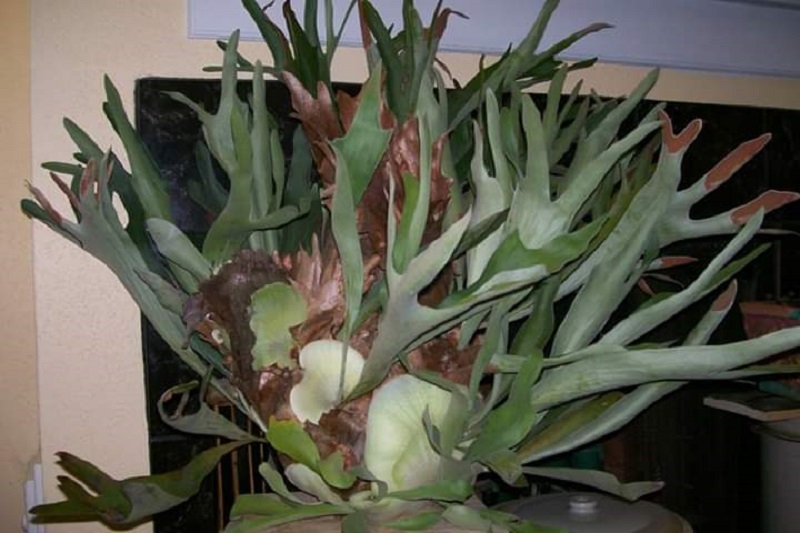
Mohanad al-Mahdawi sent gorgeous photos of his container-grown cactus. To confirm its identify, Daphne consulted old friends from her grad school days in the horticulture department at Texas A&M University: Dr. Michael Sweatt and Matt Kent (now retired, but ever teaching!).
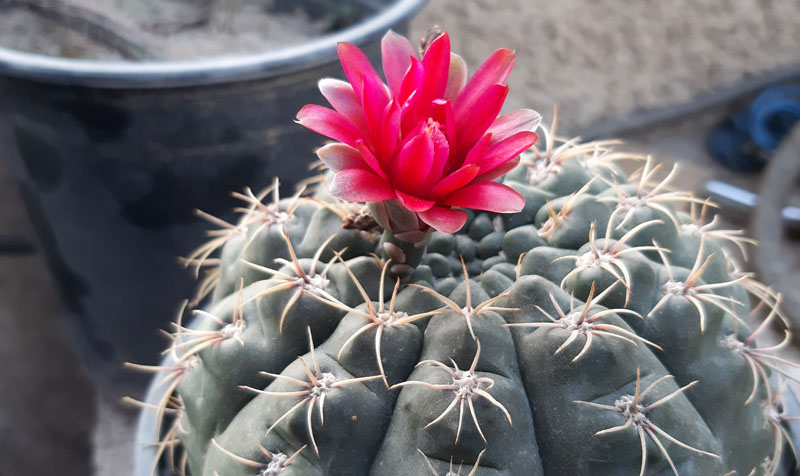
Mike identified the cactus as a South American species. Then Matt dug a little further, and by using the configuration of spines as a distinguishing characteristic, came up with Gymnocalicium baldianum, a species that can be found in the collections of many Cacti and succulent enthusiasts.
I do want to give a very grateful “thank you” to all the Texas A&M professors and AgriLife Extension horticulturists who have made huge contributions to Central Texas Gardener over the years to guide our viewers and my special projects beyond CTG!
Finally, photographer Dwayne Mann captures incredible shots of wildlife visiting his garden and beyond. His tagline: “Sharing space with lizards, owls, hawks, songbirds, critters, bugs, deer, blooms.” Wise words to garden by.
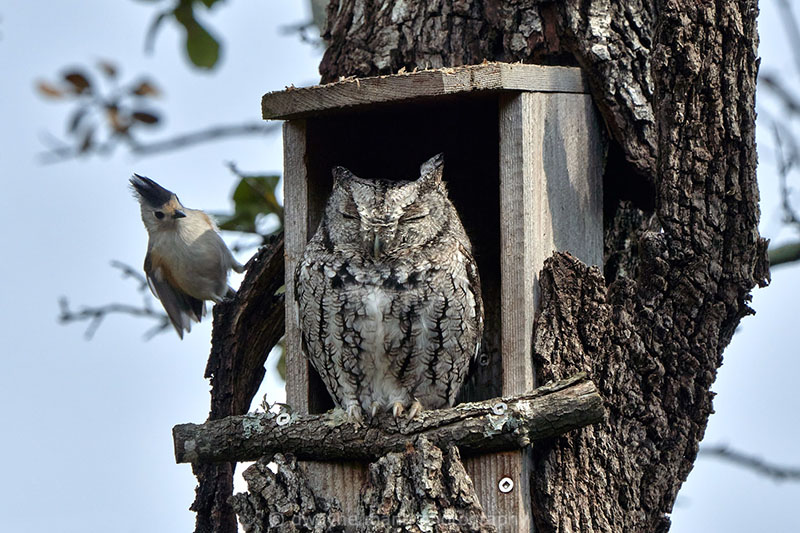
There’s lots more, so see them all and watch Daphne and Augie now!
I’ll be taking a break over the holidays, but in January would love to start the New Year with your stories, pictures, videos and questions. Email llehmusvirta@klru.org.
Thanks for stopping by! See you in the New Year, Linda
tags:

